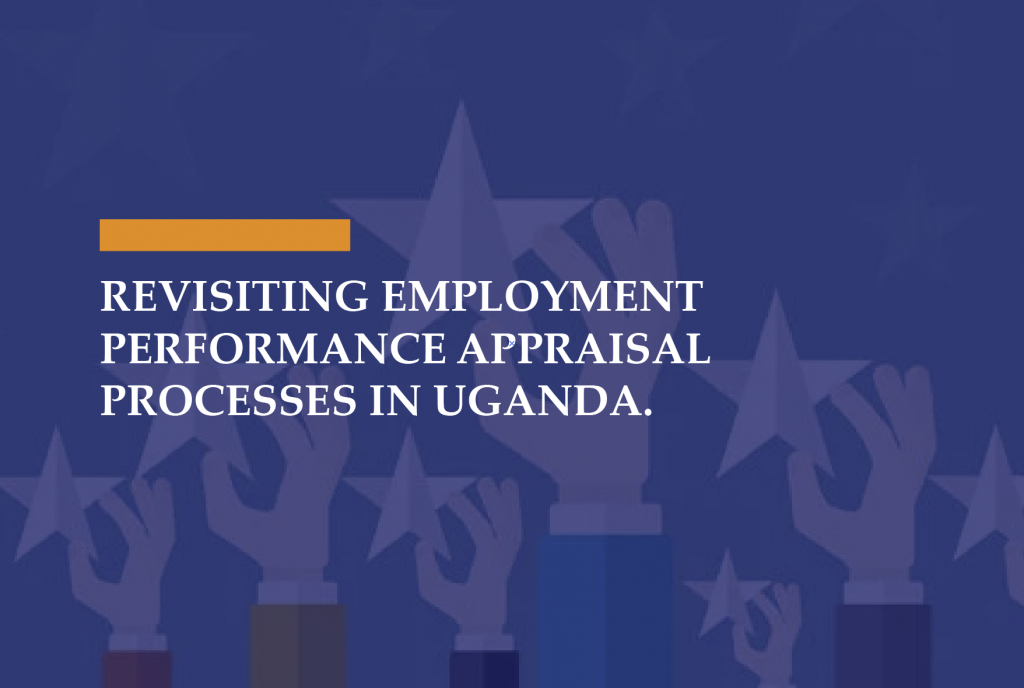Performance appraisal can be simplified as a process of assessing the quantitative and qualitative aspect of a subordinate’s job performance. Performance appraisal is an important human resource practice and tool which provides information to many critical human resource decisions such as training and development needs, compensations and benefits layoffs, staffing, pay raises and discipline.
Performance appraisal in an organization is considered as a key human resource management (HRM) practice for measuring effectiveness and efficiency.
Performance appraisal procedures are usually laid out in the Human Resource Manual and Performance Management Policies of an organization. It is important for performance appraisals to be conducted fairly, consistently and objectively to protect employees’ interests and to protect the employer from legal liability.
In the general scheme of any employment relationship, good performance is a key aspect of the employee’s contract and failure to meet the organisation’s standards of performance may be sufficient ground for disciplinary action. Performance appraisals therefore provide employers with an opportunity to assess their employees’ contributions to the organization.
In assessing an employee’s performance there has to be a performance management system/ appraisal system through which an employer is able to track and report on the efficiency and productivity of employees at all levels of the organization. An employer is also able to plan for renewal of contracts, salary revisions, promotions, training and development of their employees using the performance appraisal system as they are able to identify areas of weakness and improvement.
The Court in Donna Kamuli vs DFCU Bank [1] ; defined an “appraisal” as a method of assessing performance of an individual against numerous targets. The Court highlighted that under normal circumstances the immediate supervisor is the one who assesses the day to day performance of the individual since he or she is presumed to be interacting with his junior during the course of work on a day to day basis.
An appraisal process must be conducted in accordance with the employer’s Human Resource Manual or Performance Management Policy and must be based on the principles of fairness and equity.
Section 66 of the Employment Act empowers an employer to dismiss an employee on grounds of poor performance. It is under this provision of the law that the entire framework and procedural structure for performance appraisals becomes important.
It is important to note that termination can only be considered lawful where the disciplinary proceedings have been complied with as envisaged under section66 of the Employment Act. Any employer who fails to comply with this section is liable to pay the employee a sum equivalent to four (4) week’s net pay.
An appraisal however does not in itself amount to a hearing pursuant to which termination may take effect. Termination on the ground of poor performance must meet both substantive validity and procedural fairness.
The Court in the case of Donna Kamuli was persuaded by the Kenyan decision in– Queenvelle Atieno Owala Vs Centre For Corporate Governance for the legal proposition that appraisals and discussions held between employees and their employers touching on employees work performance, do not add up to a disciplinary hearing, and can only be evidence in support of good or poor performance at a disciplinary hearing.
The Court was of the view that any documents or records held against the claimant were to be subjected to the rigors of a disciplinary process before a decision could be made.
Best practices for a performance appraisal process
The Ugandan legal framework does not provide for procedures in formulating and implementing employment performance appraisal systems. There are however a number of decisions particularly from Uganda and Kenya that have given insight to the best practices and principles to be considered in formulating and implementing performance appraisal systems at the work place. These decisions can be persuasive in providing guidance in developing effective performance appraisal processes.
Some of the pertinent best practices include:-
- Participation of the employee
Participation or involvement of the employee in the formulation, introduction and implementation of Performance Development Plans (PDP) or Performance Improvement Plans (PIP).This will help achieve the desired business objectives and results where the same are developed and implemented with the participation of all stakeholders that is both the employee and employer.
The participation of employees in developing their PIP and PDP together with the line manager/supervisor will ensure the employee is fully aware of their objectives, measurement standards, timelines and outcomes. This also ensures that at the point of appraisal or review, the employee does not challenge the same as being a foreign document to them. The employee should be able to appreciate the strategies that are put in place to improve his/her performance. It is therefore imperative that the employer includes the employee in the PIP and not just have the employee simply sign its contents (3)
The employee should be fully aware of the tools that will be used as a basis to measure their performance in order for them to be productive under their assigned responsibilities and tasks.
The PIP and PDP procedures however should not circumvent the provisions for hearing and reason for termination where an employee has been found to be of poor performance or performing below the required standard or measure.
- Standardizing performance evaluation systems for each job
An employer must have in place a standardized employment evaluation system on how to measure good performance for each job. The Courts have emphasized that an employer must show the measures that have been put in place to enable them assess the performance of each employee and to show what measures they have taken to address poor performance once the policy or evaluation system has been applied. The effort leading to this decision must be demonstrated.(4)
An employer must show the efforts they made prior to making the decision to terminate an employee for poor performance. The burden therefore is on the employer to not just state that an employee performed poorly but must demonstrate such poor performance, and show that the employee has persistently failed to meet the employer’s performance standards despite the employer offering training, guidance, assistance and evaluation.(5)
The above can only be done by assessing an employee’s performance against the agreed and set targets. The employer must also show that the under-performing employee was given an opportunity to improve and was taken through the disciplinary process upon failure to improve on their performance. Any action against an employee such as demotion or termination without a hearing contravenes Section 66 and Section 68 of the Employment Act and is unlawful.
- Evaluation on the basis of the employee’s duties and responsibilities
It is important that the employer communicates the standards of performance required of the employee such that the employee is able to perform to the required standard. The employer must also ensure that necessary training and resources are given to the employee to equip such employee with the required performance skills.
There should be a review of the evaluation for each job title often as jobs and expectations change. Such changes should be reflected and communicated to each employee in respect to their job specifications.
It is possible that an employer may opt to subject an employee to a disciplinary process depending on the results of the performance appraisal exercise. If that is the case, it is important for the employer to implement all the requisite procedural and substantive requirements for the conduct of a lawful disciplinary process.
Disciplinary Process
Disciplinary process is part and parcel of the basic structure of an organization. The organization’s human resource policies may categorize poor performance as a serious misconduct and impose disciplinary penalties such as a written warning up to and including dismissal from employment.
The Employment Act, 2006 defines dismissal from employment as the discharge of an employee from employment at the initiative of his or her employer when the said employee has committed verifiable misconduct.
The employee must be put on notice that disciplinary action may lead to dismissal from employment.
The disciplinary process usually follows a performance appraisal where an employee has failed to improve his or her performance even where the employee has been given additional support and resources to enable them improve their performance. The Court in the case of Evelyn Lynn Kagendo vs Statpack Industries Limited (6) emphasized that performance monitoring proceedings are not disciplinary proceedings and cannot therefore be used as a substitute to disciplinary proceedings.
Disciplinary action must therefore comply with the requirements of procedural and substantive fairness.
Substantive fairness
This refers to the objective fairness and rationality of the penalty applied in disciplinary action. The decision of an employer to dismiss an employee on grounds of poor performance must be valid or justifiable.
The following considerations ought to be established prior to dismissing an employee on grounds of poor performance;
- whether the rule the employee allegedly contravened actually exists in the employer’s disciplinary code or human resource policies
- whether the rule or standard is reasonable and if it is in line with existing labour laws
- whether the employee was aware of the performance standards required of him/her
- whether the employee in fact contravened the specific rule or standard regulating conduct in the work place.
- whether the rule was consistently applied at the work place.
There should be equal treatment of all employees who contravened the same rule or standard, if the employer treats the employees differently he has to justify the reasoning and decision making.
Where poor performance has been established in contravention of the set rule or standard then the employer may assess the misconduct committed by an employee and assess whether such employee was placed under a performance development plan or performance improvement plan.
Procedural fairness
This refers to the manner in which the employer conducts the disciplinary hearing and whether the rules of natural justice have been complied with.
The tenets of section 66 of the Employment Act must be triggered before an employer terminates an employee on the grounds of poor performance. The High Court of Uganda in the case of Ebiju James Vs Umeme Ltd (8) highlights the procedures that constitute a fair hearing in conformity with Section 66 of the Act as follows.
- An employee must be given notice of allegations and a sufficient time allowed for the employee to prepare his/her defense.
- The notice should clearly set out the allegations against the employee and his/her rights in a language he/she understands.
- The employee should be informed of his/her rights to respond to the allegations against him/her orally and/or in writing
- The employee should be informed of his/her right to be accompanied by a person of his/her choice at the hearing and the right to cross-examine witnesses or call witnesses of his/her own.
- The employee should be given chance to appear and present his case before an impartial committee in charge of disciplinary issues of the employer
The grounds of poor performance must be a genuine and valid reason. This is based on the rationale that such an employee was hired and found fit for the job, any deterioration in performance must be interrogated and effort made to address it. (9)
Appeal processes
Depending on the structure of the company’s performance appraisal system, it is prudent that there exists an appeals process following a disciplinary action. This provides acceptance of the performance review, this also helps manage any potential risks or flaws during the disciplinary process and provides a system of fairness where an employee does not agree with the results of the disciplinary process or the procedure that was followed during the disciplinary process.
The appeals committee may consist of a next level manager or head of department and such persons should not have been part of the disciplinary panel. The appeals committee can either affirm the decision of the disciplinary panel or reverse the decision and recommend a resolution. The decision of the appeals committee must be communicated to the employee within a specified time.
The appeals process ensures that the employee exhausts all internal processes prior to triggering external dispute resolution mechanisms.
Conclusion
The Performance appraisal process is an important tool in managing employees and developing employee satisfaction at the work place. It is therefore important that in any organization there exists an effective performance appraisal system that aligns the skills of the employee with the needs of the organization. The appraisal system should be designed to clearly set out the objectives of the performance appraisal and provide for a reward mechanism to give importance to employee value as well as development tools to enable an employee meet the required standards of the employer or improve performance of an employee.
- Labour Dispute Claim No.002 of 2015
- Industrial Court of Kenya, Cause 81/2012)
- Banking Insurance and Finance Union vs Barclays Bank of Kenya Ltd and Kenya Bankers Association; E&LR Cause no. 95 of 2014
- Jane Samba Mukala vs Ol Tukai Lodge Limited, Cause no. 823 of 2010
- Alex Wainana Mbugua vs Kenya Airways Limited, Cause no. 430 of 2016
- Cause No.2081 of 2011
- HCCS No. 0133/2012
- Christopher Onyango vs Heritage Insurance Co. Kenya Ltd, Cause no. 781 of 2015



